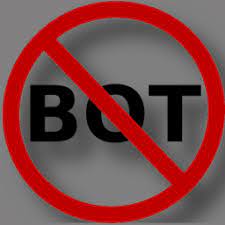In my capacity as a website engineer, I possess a keen understanding of the pivotal role played by crawler technology in the online landscape. Crawler technology facilitates rapid acquisition and processing of data, thereby furnishing invaluable support to business decision-making. Notwithstanding its manifold advantages, we must remain cognizant of the latent threats posed by crawlers. Malicious crawlers, for example, may inflict damage on websites, including but not limited to bandwidth consumption, data exfiltration, and destabilization of website functionality. Such activities not only impede normal website operations but also expose them to potential legal ramifications. As such, to safeguard the lawful interests of websites and preserve the sanctity of data, developers have implemented a range of anti-bot technologies.
What is a web crawler?
Crawlers are automated programs that perform web scraping by extracting information from web pages on the Internet. They can systematically traverse websites according to predetermined rules and extract data for various purposes, such as search engine indexing, data analysis, and monitoring, among others. In the current information age, crawlers have become an indispensable tool that can assist us in rapidly acquiring and processing data and providing robust support for business decision-making.
However, we must not overlook the potential security risks posed by malicious crawlers. Such malevolent crawlers may cause website overload, rendering it incapable of normal functioning, or obtain sensitive data, resulting in severe information leakage. Furthermore, certain malicious crawlers may exploit vulnerabilities to launch attacks on websites, thereby endangering website stability and security. These security risks not only impede the smooth operation of websites but may also lead to legal ramifications.
What is anti bot?
In order to combat the threats posed by malicious crawlers, developers have implemented various anti bot technologies, including:
IP blocking: This technique involves blocking IP addresses that are suspected of being associated with malicious crawlers by monitoring the requested IP addresses, thereby preventing access to the website. Although this method is suitable for restricting access by specific IPs, it is not effective in dealing with crawlers that use proxy servers.
Robots.txt: This technology is a common method of limiting crawler access by instructing crawlers which pages can be crawled and which cannot be accessed through the placement of a file named robots.txt in the website’s root directory. The technique is simple and easy to use.
User-Agent identification: Each browser or crawler has a unique User-Agent identifier, and the website can determine whether a visitor is a crawler by checking the User-Agent. If an illegal User-Agent is detected, the website can take appropriate defensive measures to ensure the security of the website.
Verification code: This technology can effectively prevent the access of automated programs, and the introduction of verification codes requires users to perform human-machine verification. While this technology can effectively block most crawlers, it may have an impact on user experience.
Furthermore, there are some advanced anti bot technologies, such as crawler identification based on machine learning and dynamic page rendering. These technologies can more accurately detect malicious crawlers and further improve website security.
How to breakthrough the anti bot?
Despite the fact that anti-bot technology can provide a certain level of protection against malicious crawlers, there will always be a group of sophisticated crawlers or malicious attackers who can circumvent these restrictions. They may utilize the following techniques to breach the defense of anti-bot technology:
- IP proxy
By employing an IP proxy server, the real IP address of the crawler can be concealed, making it impossible for the website to block it. Attackers can use multiple proxy IPs in rotation to reduce the likelihood of detection.
- Masquerading as User-Agent
Malicious crawlers can evade the identification restrictions of User-Agent by disguising themselves as legitimate browser User-Agent identifiers, making it challenging for the server to recognize them as crawlers.
- Dynamic page rendering
Some websites generate page content dynamically using JavaScript, whereas conventional crawlers can only crawl static HTML. Malicious crawlers can simulate the browser environment and execute JavaScript code on the page to obtain dynamically generated data.
- Data analysis
Malicious crawlers may utilize advanced technologies, such as machine learning and natural language processing, to analyze the anti-bot mechanism of the website and pinpoint its vulnerabilities. By mimicking the behavior of genuine users, they can avoid detection by websites.
To combat the ever-evolving anti-bot technology, I highly recommend that website engineers incorporate the ScrapingBypass API in their development process. This powerful anti-bot solution utilizes intelligent identification and analysis to effectively detect and block malicious crawlers. With a range of anti-bot technology identification capabilities, including User-Agent identification, IP blocking, and verification code identification, the ScrapingBypass API can be customized to meet the specific needs of different websites.
By implementing the ScrapingBypass API, you can easily bypass Cloudflare’s anti bot verification, regardless of the volume of requests being sent. With just one API, the ScrapingBypass API can break through all anti-bot inspections, easily bypassing Cloudflare, CAPTCHA verification, WAF, CC protection, and other restrictions. Additionally, it provides HTTP API and Proxy, including interface address, request parameters, and return processing, while also allowing the configuration of Referer, browser UA, headless status, and other browser fingerprint device features.
In summary, utilizing the ScrapingBypass API can significantly enhance the security and stability of a website, effectively preventing the intrusion of malicious crawlers. As an advanced anti-bot technology, it can protect your website from malicious attacks and provide superior crawler data collection services. Therefore, incorporating the ScrapingBypass API into website development is a wise decision.
